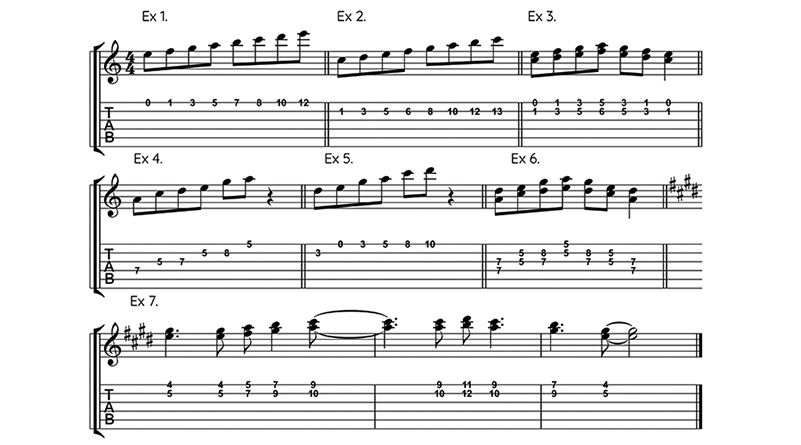Guitar Cool: Simple Ways To Harmonise Guitar Parts
Guitar Cool: Simple Ways To Harmonise Guitar Parts
Simple ways to harmonise guitar parts: The concept of instrumental harmonising is certainly not new, it has been a compositional technique in classical music for centuries. Harmonising of guitar parts has been popular since the mid-1970s in bands such as Queen, the Allman Brothers, Thin Lizzy, Lynyrd Skynyrd, etc.
You can buy harmoniser (harmonizer) pedals to do similar things, but I am talking about playing harmonised parts with two guitars live, or two guitars recorded on two separate tracks. The pedal versions are good in a way, but don’t cut it in comparison with when performed live with two guitarists as with the bands mentioned above.
We will demonstrate this technique by using a simple C major scale lick. As you can see in music example Ex 1. we can play a C major scale starting on the E open string note on 1st string all the way up to E an octave higher. In Ex 2. we play a C major scale along the 2nd string to the 13th fret C note an octave higher. Practise these so you know them well.
Ex 3. is when we put the notes you just played in Ex 1. and 2. together to form a harmonised melody. Now if you play this on an acoustic guitar or an electric with no effects it will sound good, but if you add in some effects, it will sound great. Try playing Ex 3. with a bit of overdrive on both parts and hear what happens.
Of course, the best way to have fun with this stuff is to get a friend to play one part while you play the other. Optionally you can record one part onto a multi-track recorder before playing the other part on another track and play them back together to hear the result.
Harmonised guitar parts don’t always come in 3rds as used in the previous examples, you can use any interval. In Ex 4. and Ex 5. we are using 4ths mainly. They are parts of a pentatonic scale which you hear regularly on your favourite records. Ex 6. is the two parts doubled – all 4th intervals except the C and E notes which are 3rds.
Ex 7. is the first half of a harmonised guitar solo from Here Comes The Night, transcribed from Van Morrison’s first band Them. On the recording it is played on one guitar, but you should split the parts between two guitars and hear the difference!
Playing harmony parts with other guitar players is a lot of fun, though you don’t have to be limited to just trying it with guitarists. One band I’ve been in with legendary saxophonist Johnny McCormick had me playing harmony parts with him a lot, and if you ever get the chance of playing in a big band you will experience playing horn lines in harmony with the horns. Exciting indeed.
When experimenting with harmonised parts, it’s common practice to write the parts out first (either notation or tab will do) and test it out before getting another player in to play the other part. See if you can expand your abilities into harmony parts, you might just surprise yourself.
Kevin Downing is a professional guitarist, teacher, and the author of six published guitar related books. His contact details along with many other articles and freebies are on his website at www.guitar.co.nz



